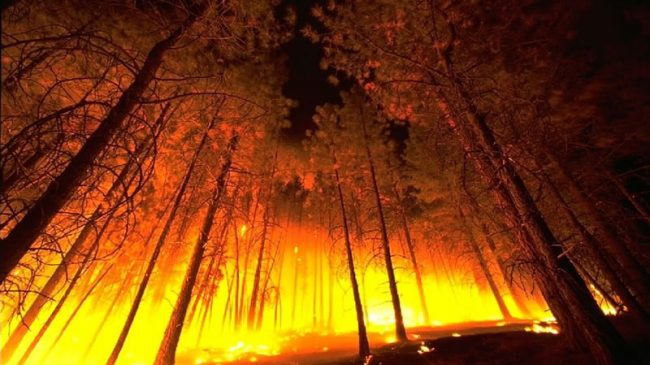So far this year, wildfires have burned about 2.7 million acres across the United States. That’s below the average for the past decade, but well above the historical norm. In the past month, about 27,000 acres have burned in California, mostly in the national forests of Los Padres and Angeles. While these fires are now mostly contained, the potential remains for a repeat of previous years’ catastrophic fires.
On July 1, the National Interagency Fire Service issued a grim warning for California, cautioning that the state’s near-continuous five-year drought has weakened trees. As a consequence, “A heavy concentration of heavy, dead and highly combustible fire material now exists in the Sierras,” and there is thus a significant risk of lightning causing extreme “crown” fires.
With luck, the monsoon rains will soak the dead wood and California will be spared this year. But the longer-term problem will remain. In the past three decades, the area burned by wildfires in the U.S. each year has grown dramatically, while the number of fires has remained roughly constant. The big change has been the average size of each wildfire, which has more than doubled. The large crown fires also burn hotter, imposing a greater risk for people living near the forest and scorching the soil, which delays regeneration.
Although climate change has likely played a role, the main reason wildfires have become larger and more devastating is the way the forests have been managed — in particular, the Forest Service’s fire suppression policy. After the Big Burn of 1910, which destroyed three million acres and killed 92 people in Washington, Idaho and Montana, the Forest Service initiated a policy of putting out fires rather than letting them burn naturally. For decades, suppression appeared to be highly successful. From 1910 to the mid-1950s, the area of national forest burned fell from over 1 million acres to around 200,000 acres – and stayed more or less constant until the 1980s.
Before the suppression policy was enacted, California likely experienced frequent small fires, largely caused by lightning, which regularly cleared out the understory, creating a diverse, patchy mosaic. Suppression interfered with that process, resulting in denser stands of trees, reduced diversity and a buildup of dead wood. During dry years, lightning readily ignites the understory of dead, dry wood. The resultant fire then climbs to the crown and is spread by the wind. Under the right conditions, such fires can spread rapidly and can be difficult to stop.
From both an ecological and an economic perspective, continuing with this suppression policy is lunacy. Yet instead of ending it, the Forest Service has doubled down. Between 1986 and 1995, an average of 3 million acres of U.S. forest burned each year and the Forest Service spent an average of $311 million per year on suppression. The following decade, 5.5 million acres burned per year, and the Forest Service spent $670 million per year on suppression. Between 2006 and 2015, the numbers continued to grow – 7 million acres burned each year and the Forest Service spent $1.2 billion a year on suppression. Last year, over 10 million acres burned, and the Forest Service spent $1.7 billion on suppression.
As a proportion of the Forest Service’s total budget, wildland fire management grew from 16 percent in 1995 to 52 percent in 2015. Ironically, in a recent piece arguing for even more spending on fire suppression, the Forest Service admitted, “We urgently need to address the runaway growth of fire suppression costs, and continue funding other critical programs that protect communities and infrastructure, and increase the ability of our lands to recover from wildfire.”
If the Forest Service really wants to end the runaway growth in spending on suppression and the ecological destruction it has wrought, it could listen to its own researchers, who have argued that forest managers should be rewarded for limiting the use of suppression and undertaking more prescribed burns and mechanical thinning. The aim would be to mimic the effects of the many small fires that would occur naturally, preventing excessive fuel buildup and reducing the number of catastrophic fires.
Julian Morris is vice president of research at Reason Foundation.

